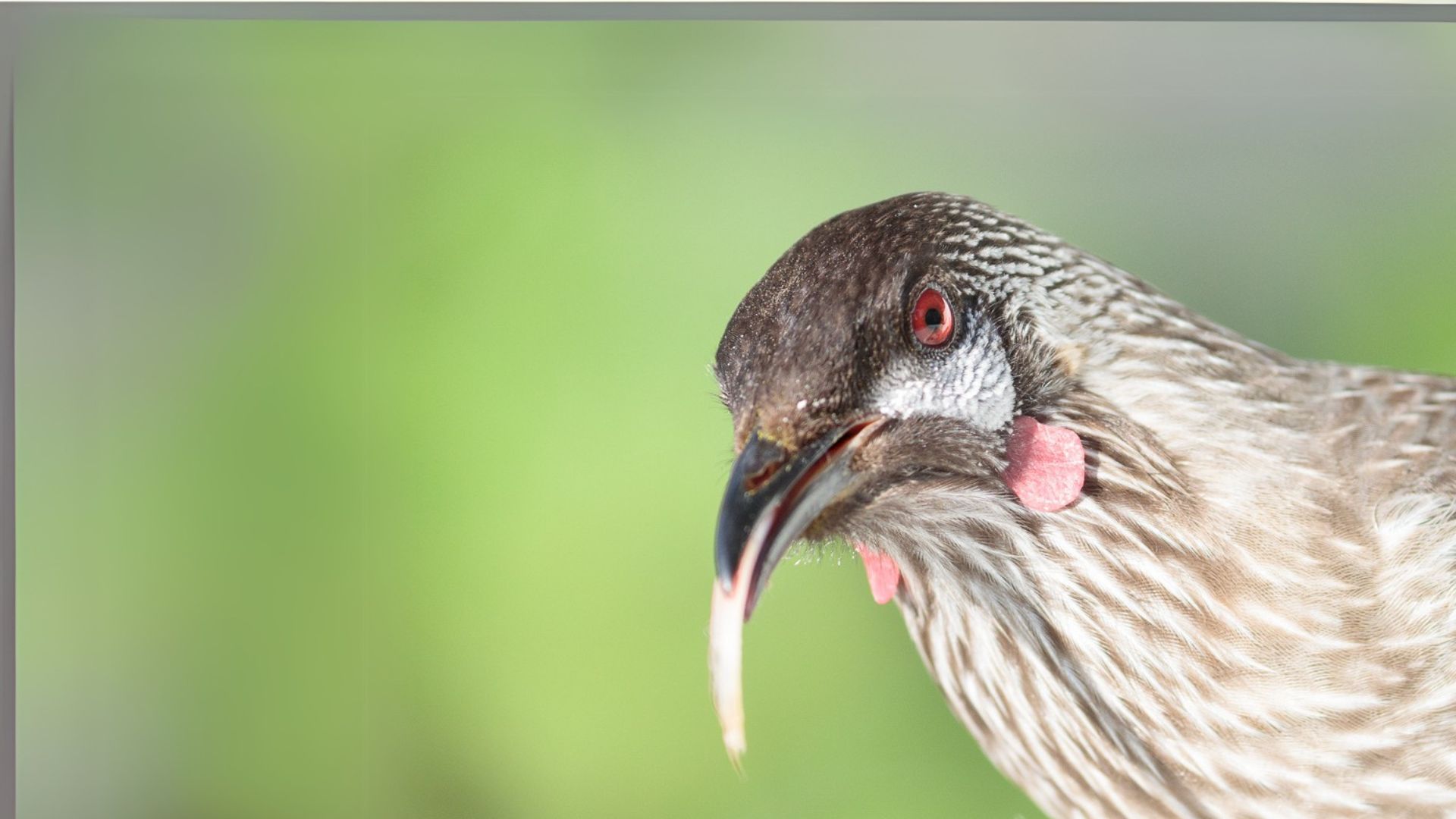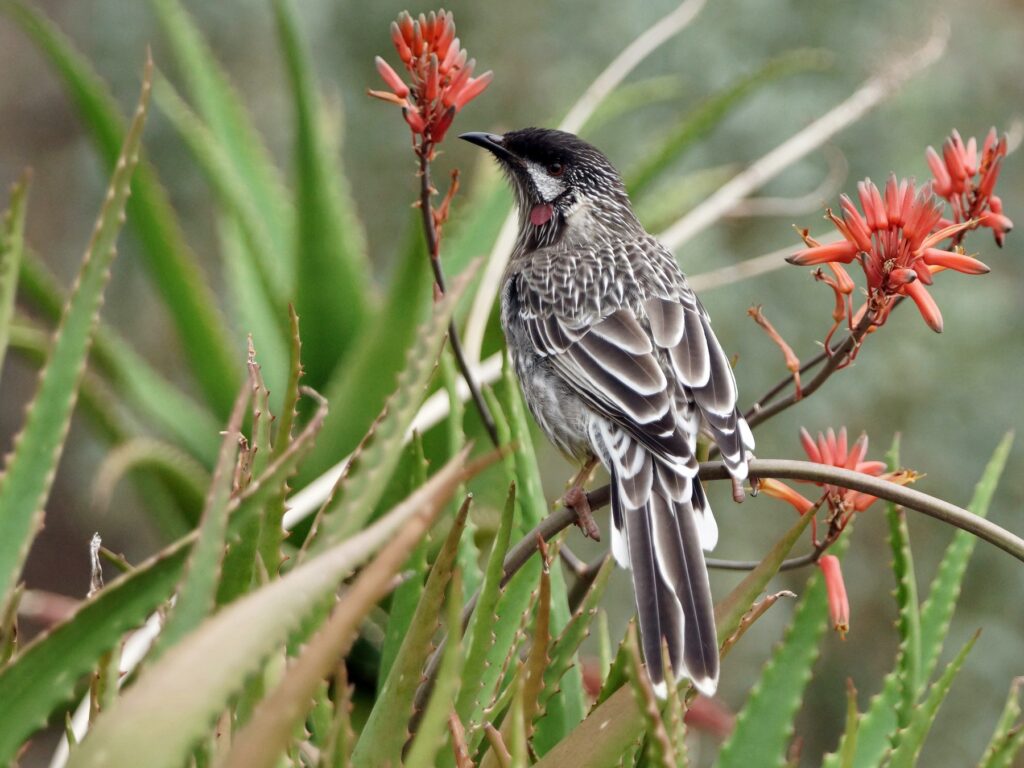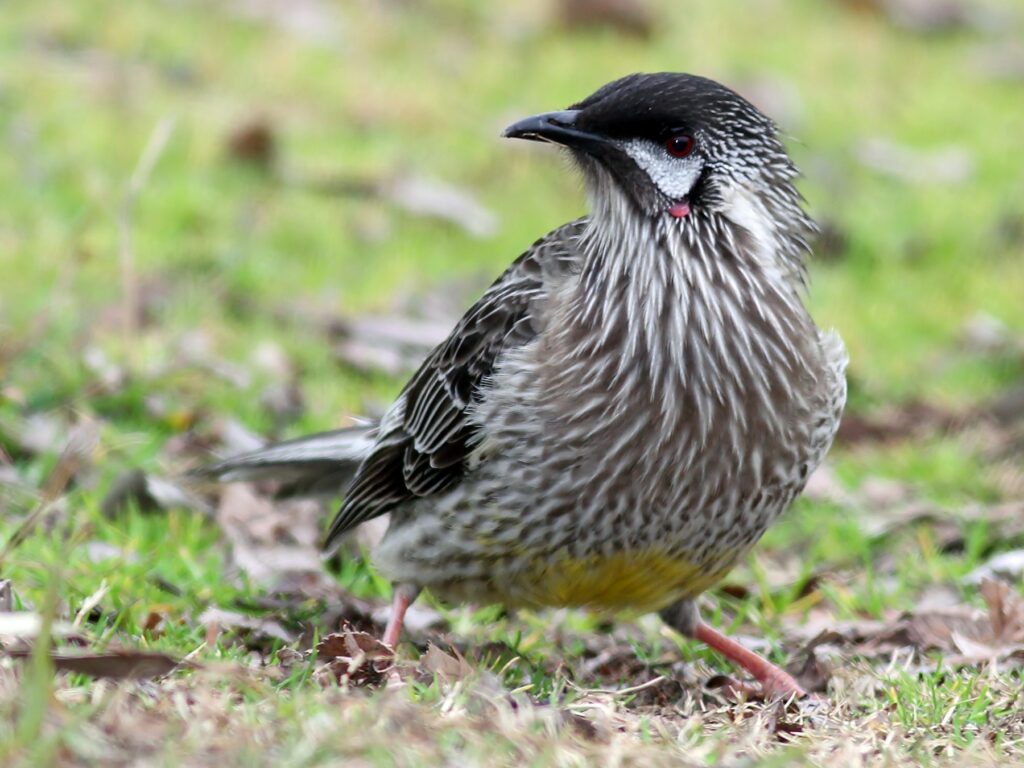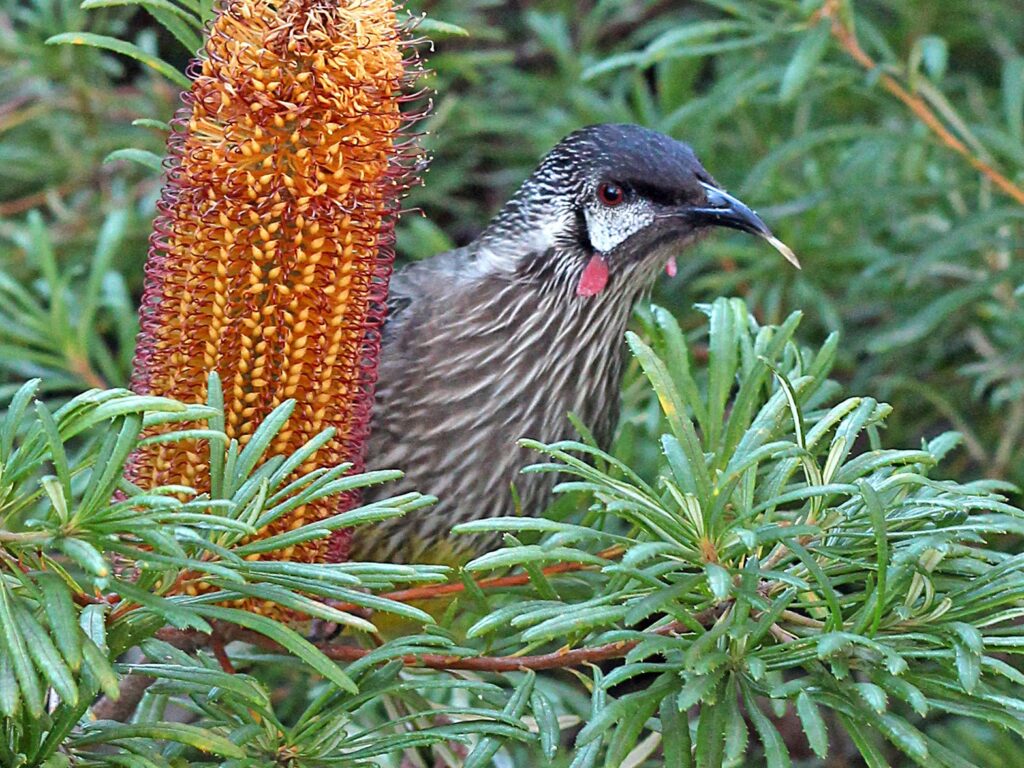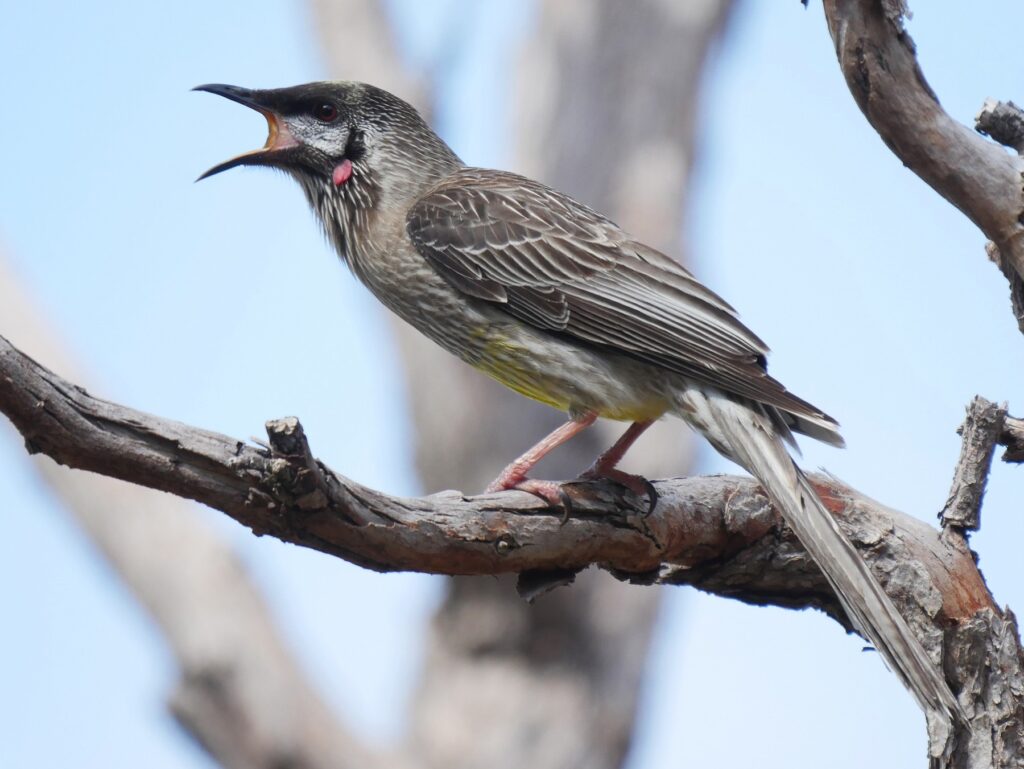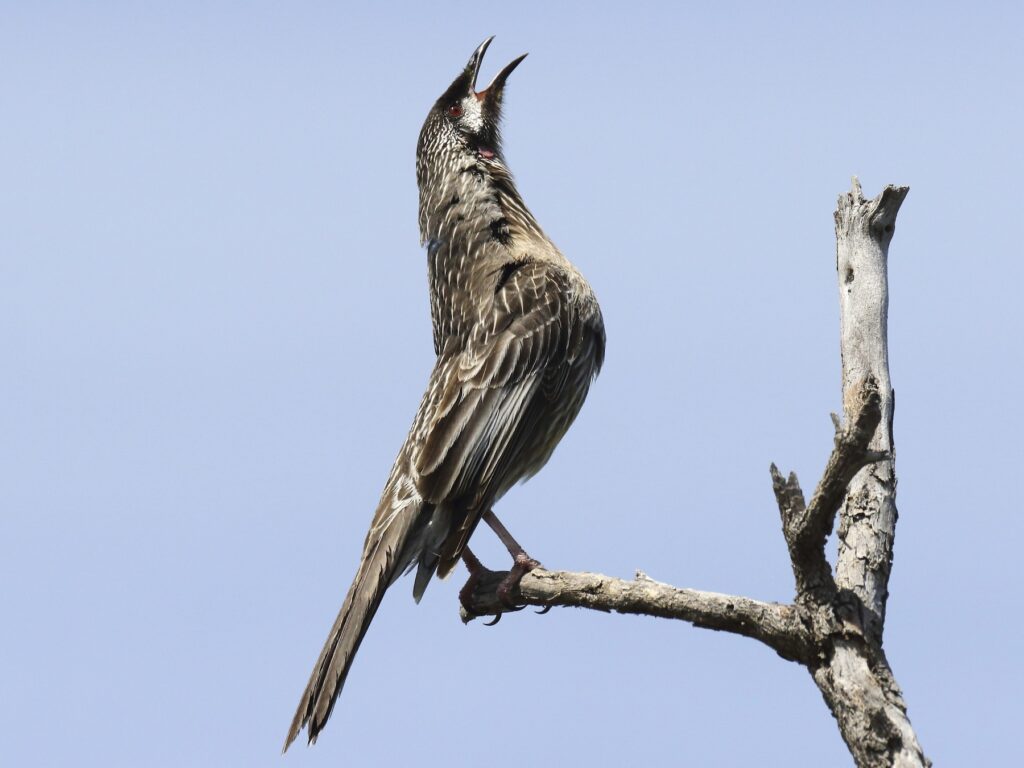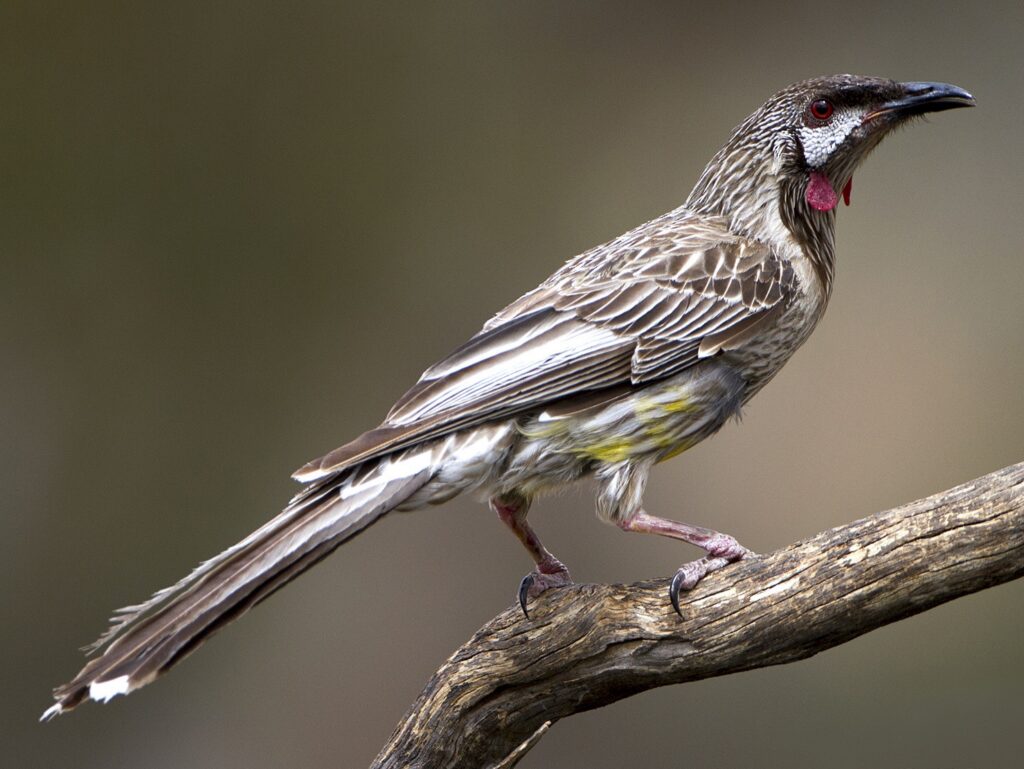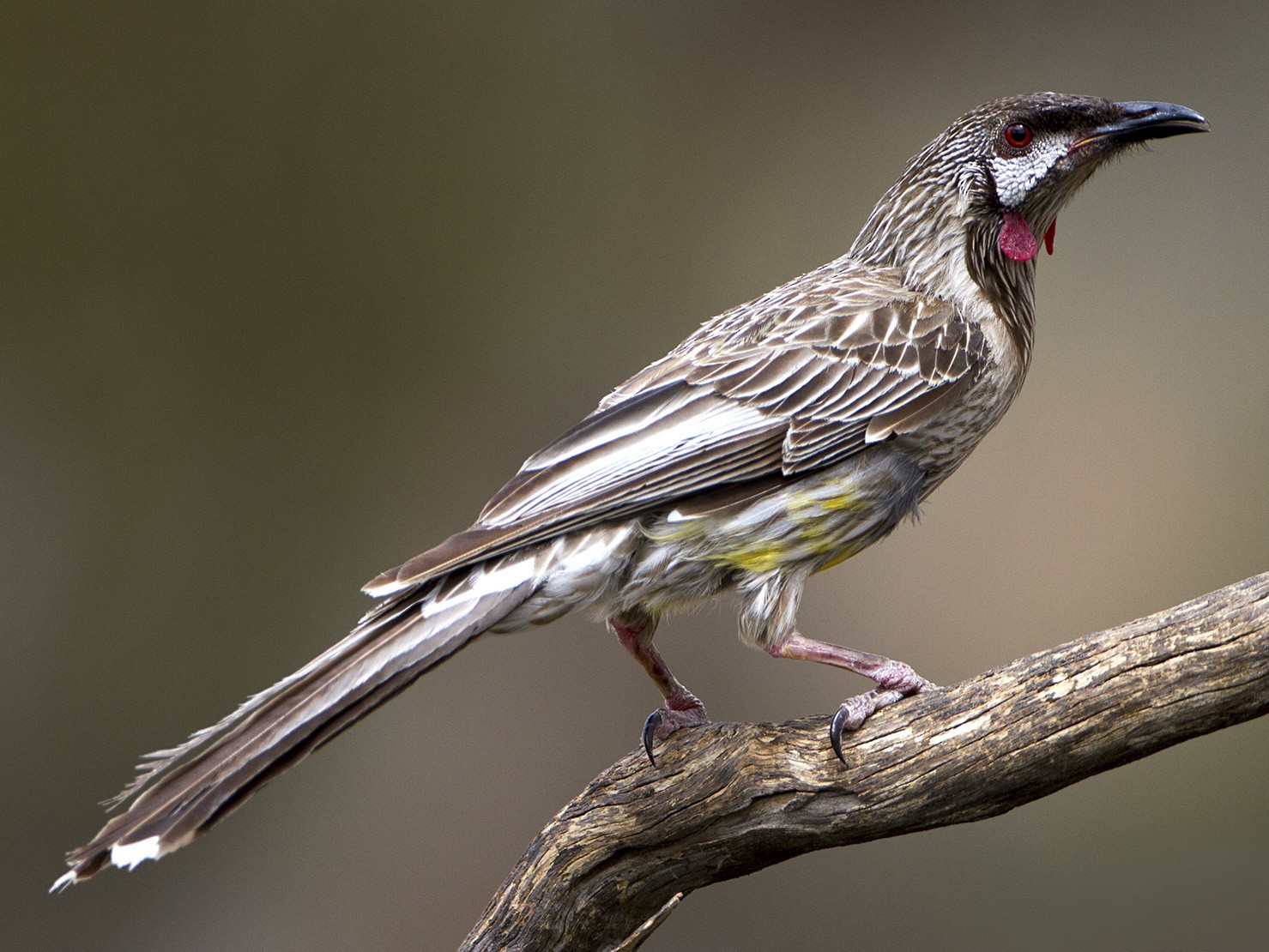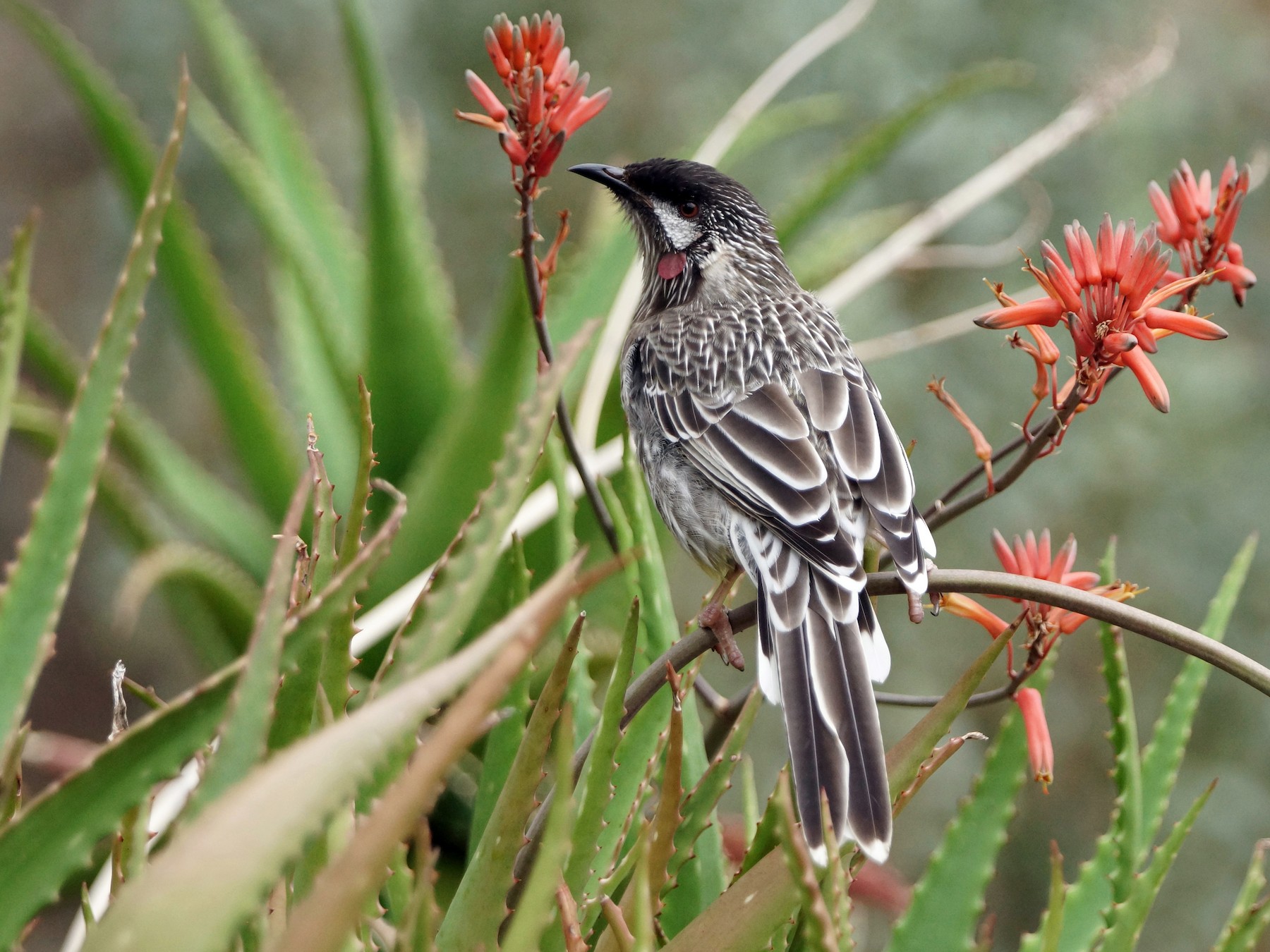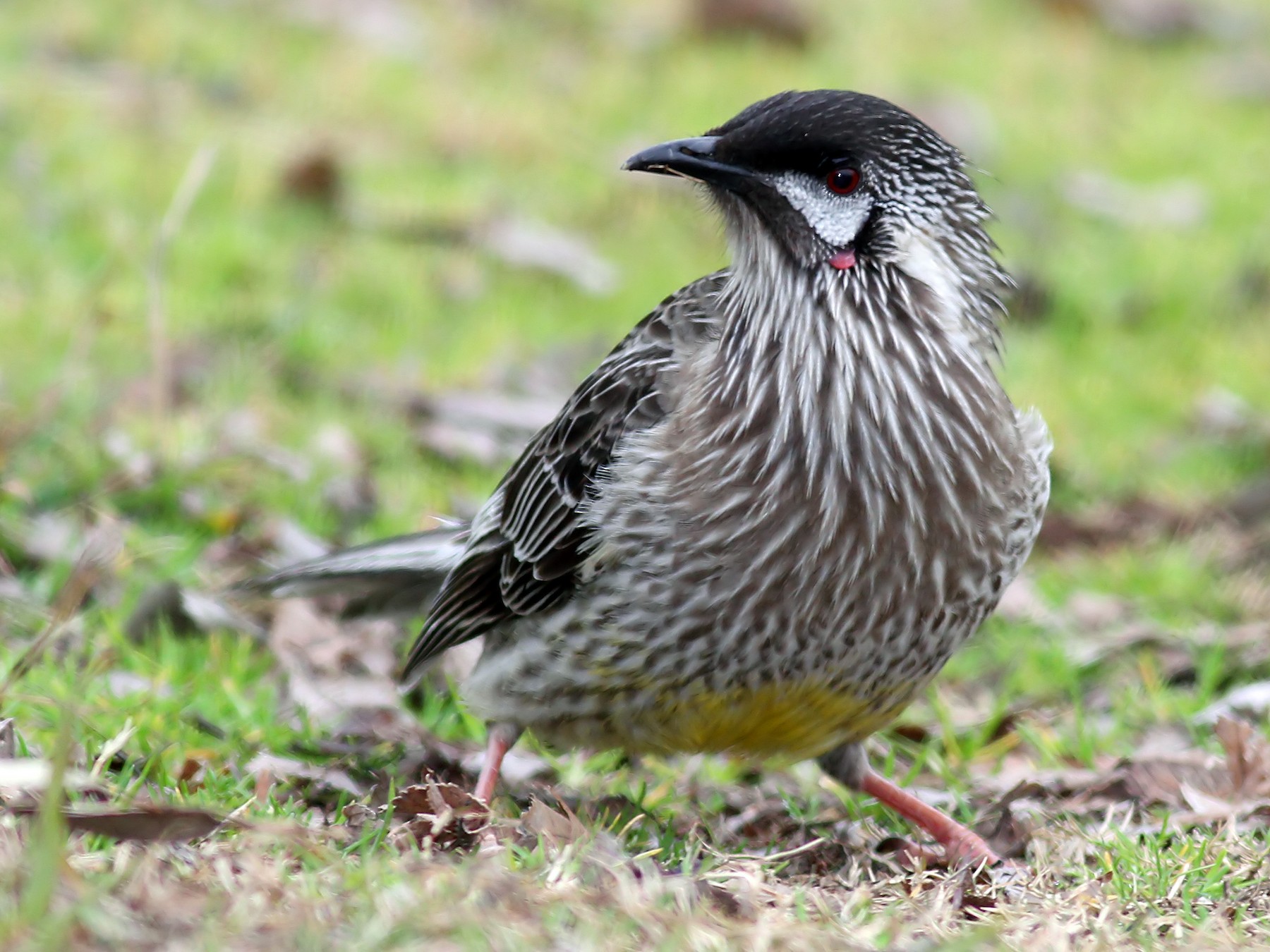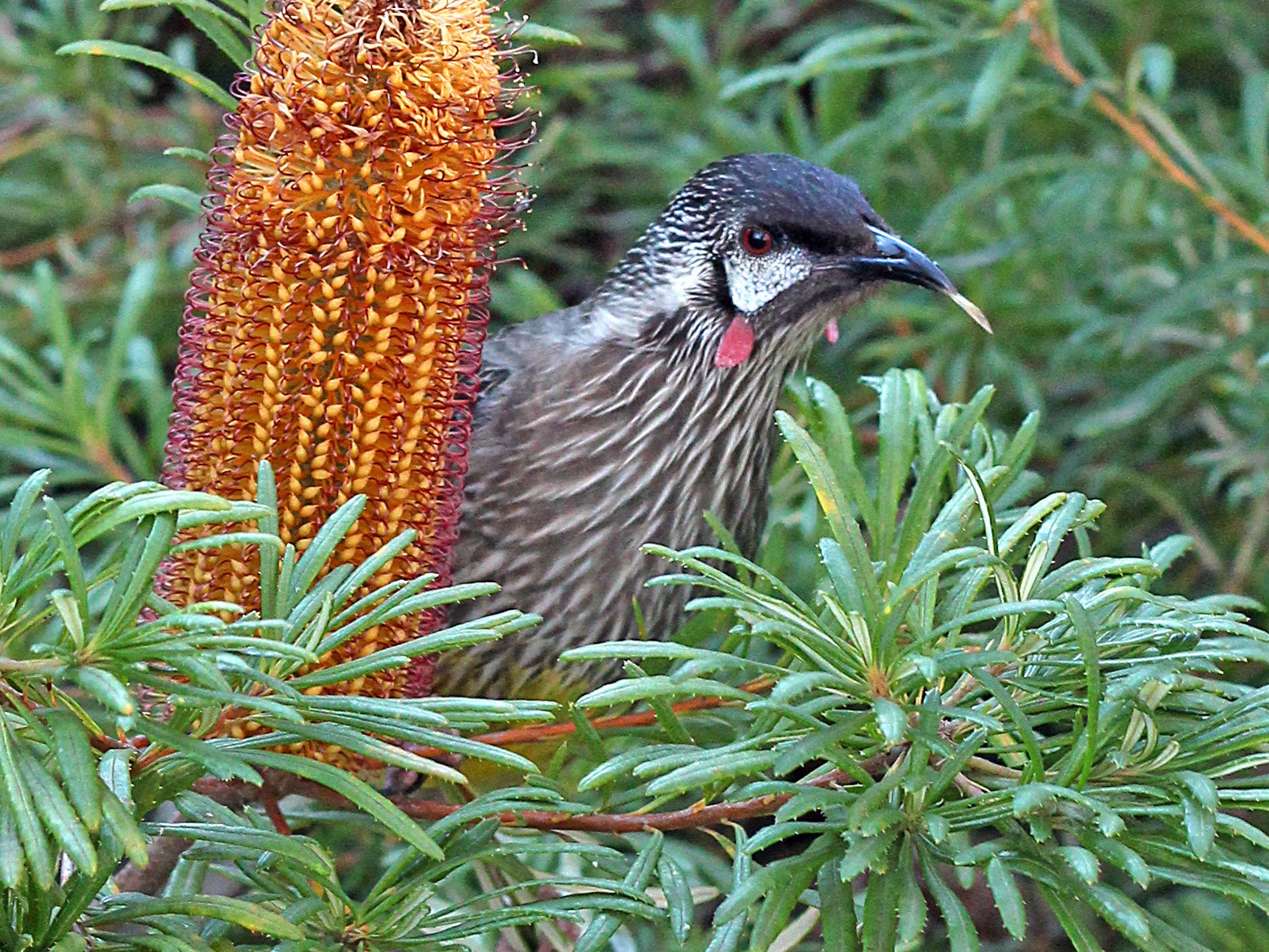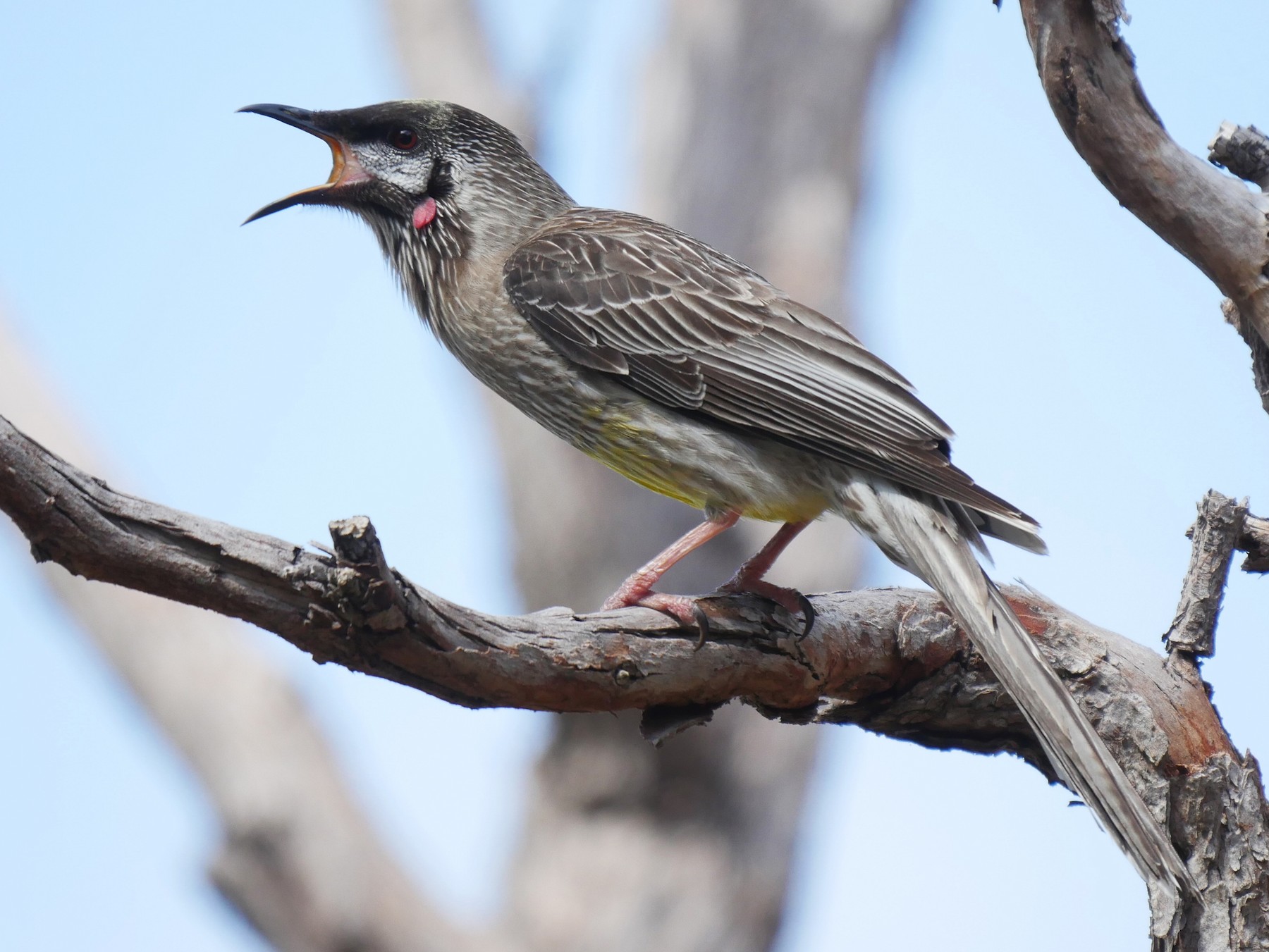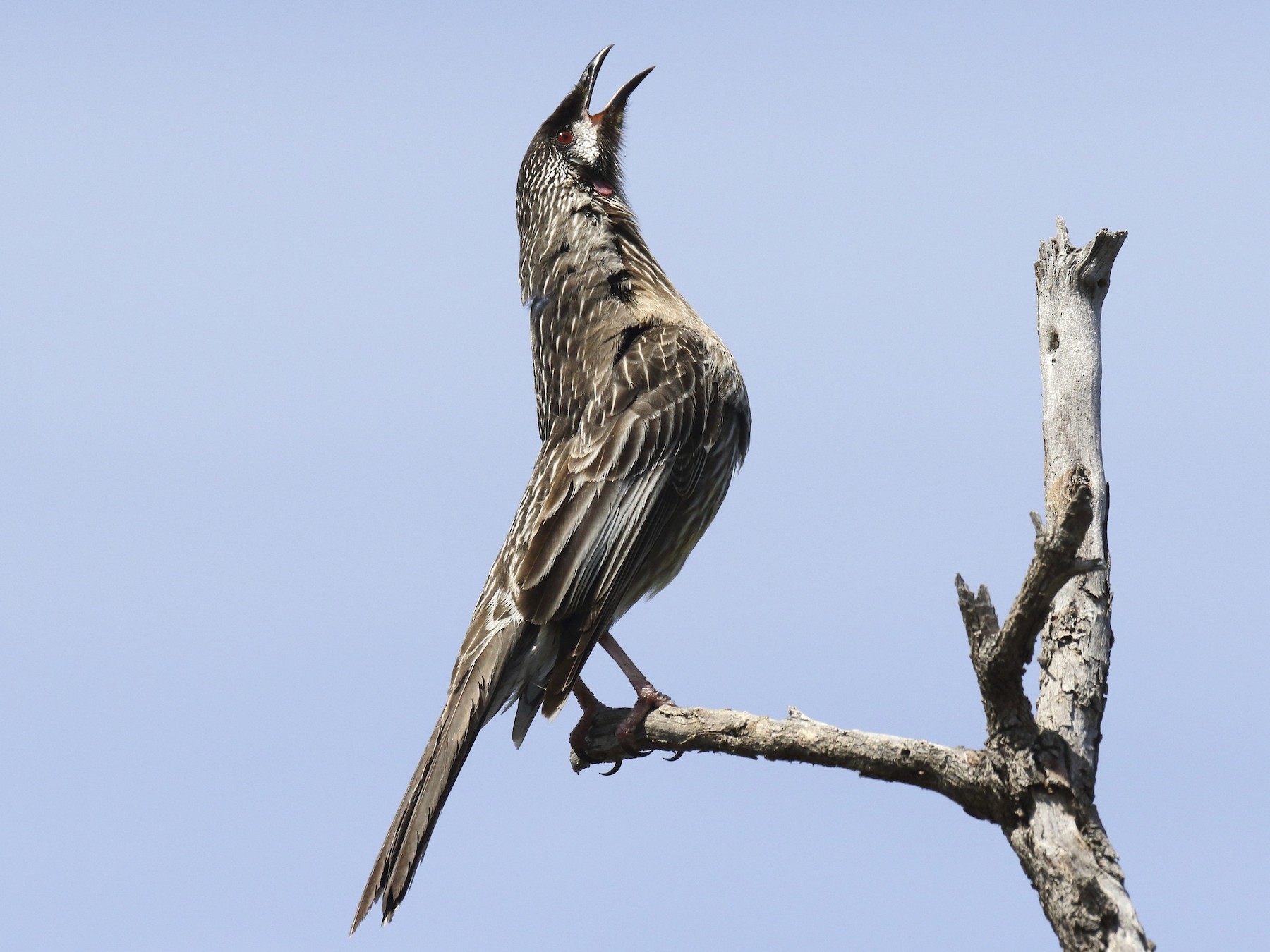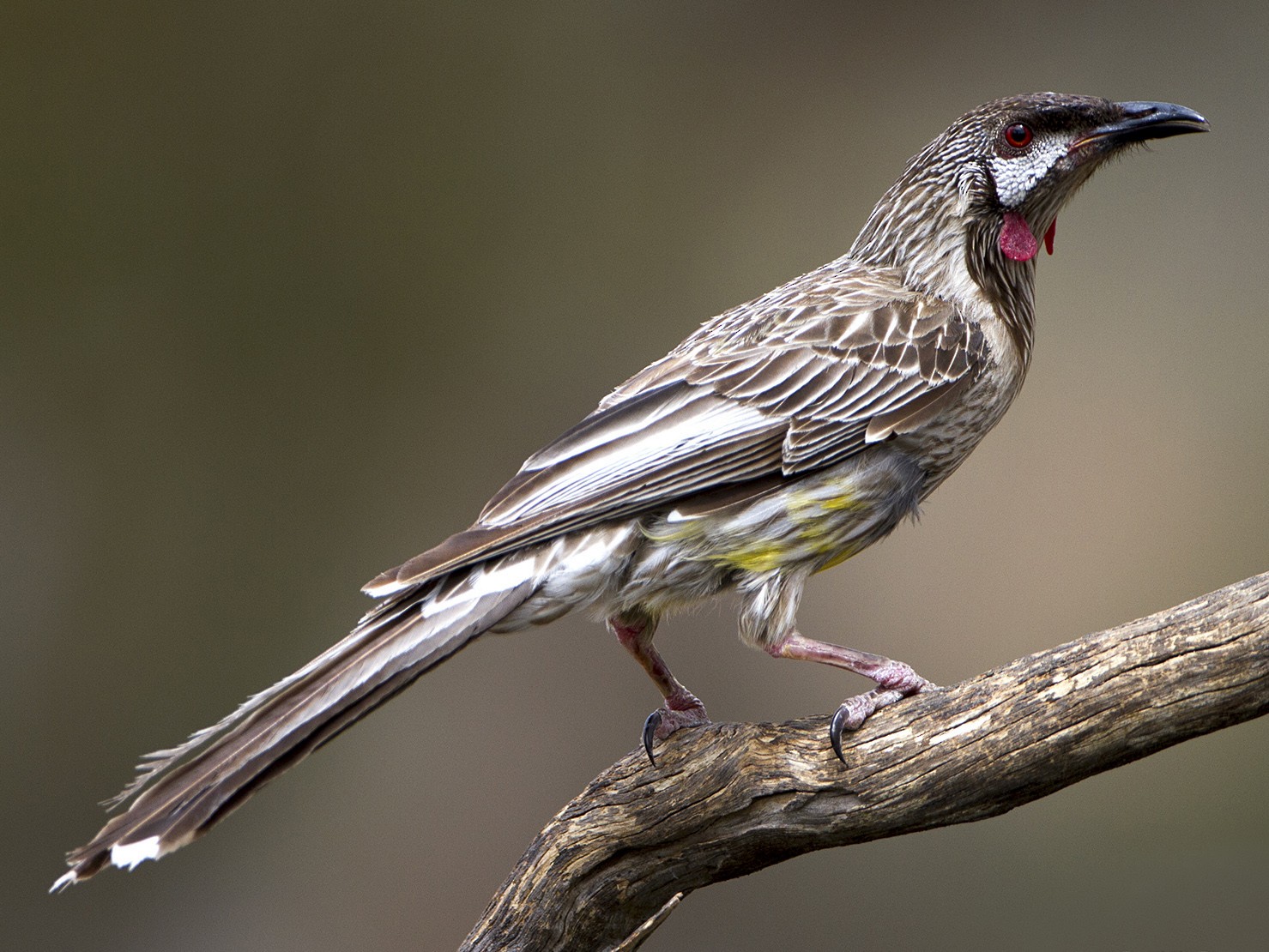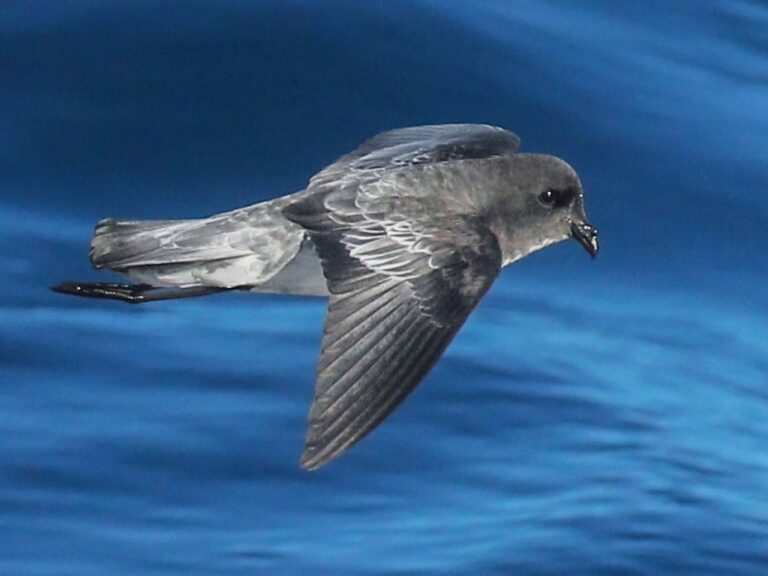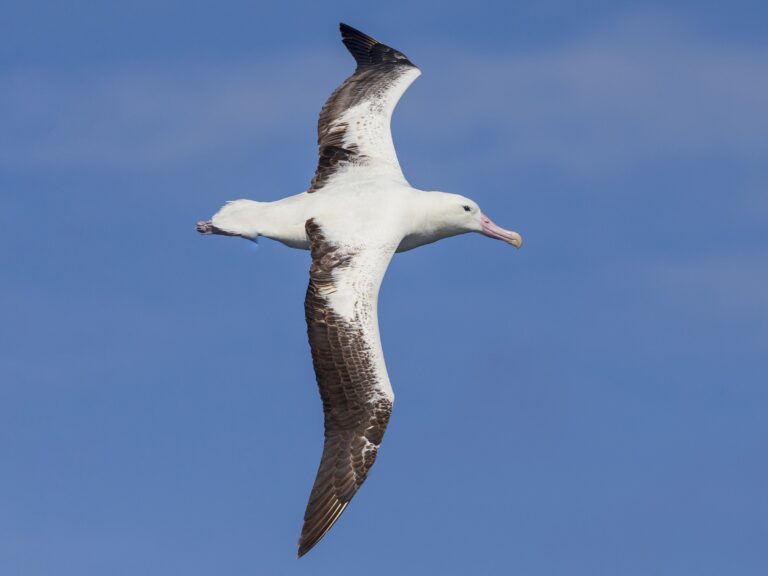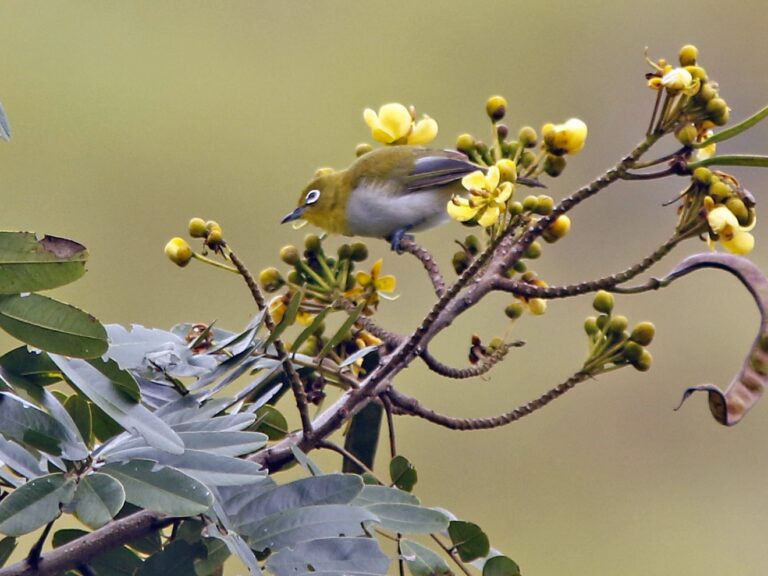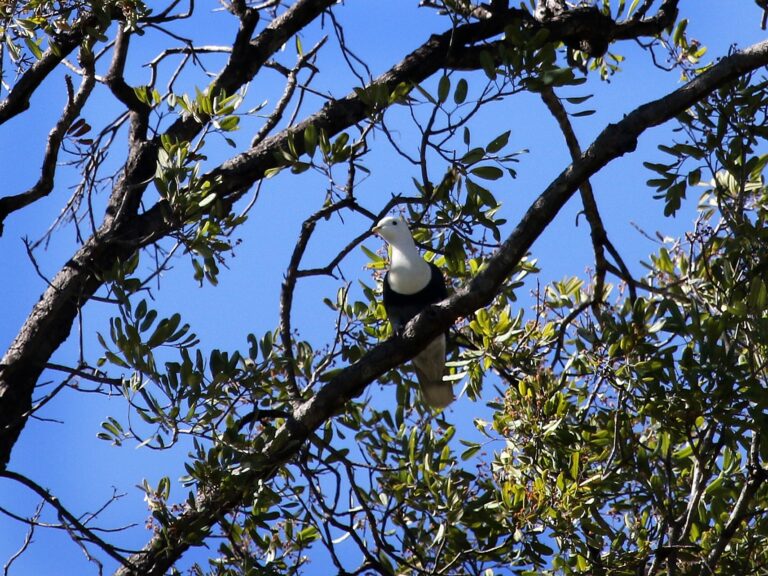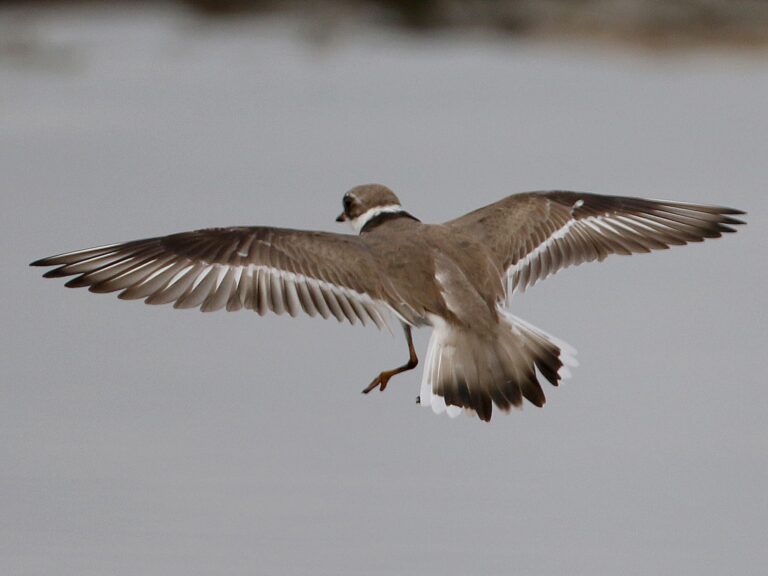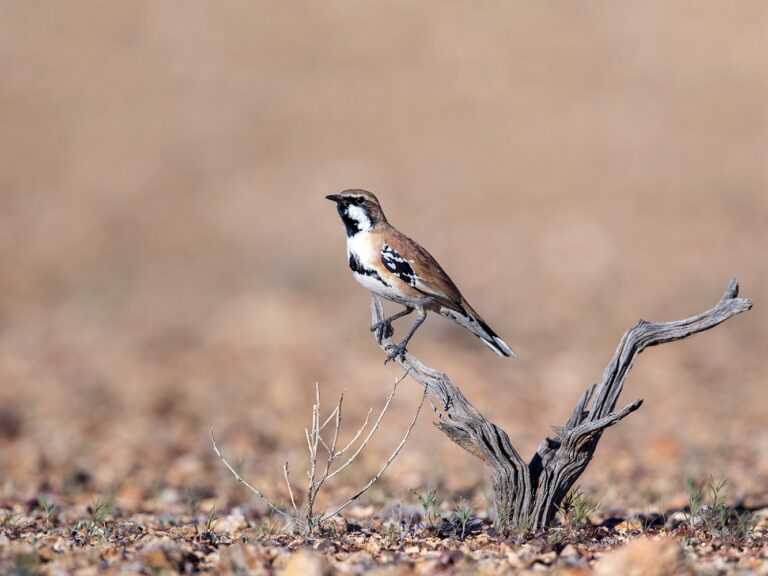Red Wattlebird: A Fascinating Look at Australia’s Noisy Nectar Feeder
The Red Wattlebird is one of Australia’s largest honeyeaters, easily recognized by its grey-brown feathers, red eyes, and small red flaps of skin on its face called wattles.
It stands out not only for its size, measuring between 33 and 37 cm, but also for its loud calls and striking appearance. This bird is common in southern Australia and adapts well to different environments, from woodlands to urban areas.
These birds are known for their busy behavior as they feed mainly on nectar but also eat insects. Their strong presence in gardens and parks makes them familiar to many Australians.
Key Takeaways
- The Red Wattlebird is one of the largest honeyeaters in Australia.
- It thrives in various habitats, including urban areas.
- Its diet mainly includes nectar, supported by insects for protein.
Physical Characteristics
The red wattlebird has distinct colors, size, and features that make it easy to identify.
Its plumage shows unique patterns, and it has bright markings that stand out.
The bird’s size and weight also set it apart from other honeyeaters.
Plumage Description
The red wattlebird’s feathers are mostly grey-brown, with darker shades on the crown and back. Its chest features white streaks that contrast sharply with the rest of its plumage.
The belly has a bright yellow patch, which is quite noticeable during flight or when perched.
These color patterns help the bird blend into wooded environments but also signal its presence. Both males and females look very similar, showing little difference in plumage.
Juveniles tend to have duller colors but develop adult markings as they mature.
Size and Weight
Red wattlebirds are large honeyeaters, typically measuring 33 to 37 cm (13 to 14.5 inches) in length. This makes them one of the biggest birds in their family. They usually weigh between 120 to 180 grams, depending on factors like age and diet.
Their strong build helps them hover and feed on nectar efficiently. Compared to related birds like the tui, red wattlebirds are slightly larger but less robust in body shape. Their size allows them to move quickly through trees while searching for food.
Distinguishing Features
The most notable feature of the red wattlebird is the pair of bright red wattles hanging from each side of its cheeks. These fleshy, skin-like growths give the bird its name.
It also has a sharp, curved bill suitable for feeding on nectar and catching insects.
The bill is dark and slightly hooked at the tip Another clear marker is the white streaked chest combined with the yellow belly patch. These features, along with the red wattles, make it easy to recognize the bird at close range or in flight. For more detail, see the red wattlebird’s physical traits and plumage.
Habitat and Distribution
The Red Wattlebird lives in several parts of Australia. It adapts to different habitats but prefers areas rich in food sources, like nectar from flowers. Its distribution covers a wide range, mostly in the southern and eastern regions of the continent.
Geographic Range
The Red Wattlebird is found across southeast Queensland, New South Wales, Victoria, South Australia, and parts of southwest Western Australia. It does not migrate and stays year-round wherever it lives.Its wide range includes both coastal and inland areas but mainly southern and eastern Australia.
This bird is common in areas where open forests and woodlands are present. It sometimes moves into urban gardens if suitable food is available.
Preferred Environments
This species mainly lives in open forests and woodlands. It favors places with many flowering plants, as nectar makes up a large part of its diet. Gardens and orchards can also attract Red Wattlebirds if flowers and food sources are present.
The bird is known to protect areas with food plants from other honeyeaters. Its habitat often includes patches of eucalyptus trees, which provide both nectar and nesting sites. It adapts well to different environments but needs reliable food sources to thrive. For more detail, see the Australian Museum’s description of Red Wattlebird habitat.
Behavior and Diet
The Red Wattlebird shows clear patterns in how it feeds, communicates, and interacts with others. Its daily routine involves searching for food and defending its territory.
Feeding Habits
The Red Wattlebird mainly feeds on nectar from flowers, using its thin, curved bill to reach inside. It prefers flowers from gum and bottlebrush plants. Besides nectar, it also eats insects, which it catches by pouncing on shrubs or hopping on the ground.
Soft fruits like peaches, figs, and plums are part of its diet too.
It doesn’t spend much time feeding on the ground but does hop there occasionally to grab insects or food from shrubs. This mix of nectar, insects, and fruit keeps its diet varied and balanced. For more details, see the Red Wattlebird feeding habits.
Vocalizations
Red Wattlebirds are known for their loud and harsh calls. These vocal sounds help to establish territory and warn other birds to stay away. Their calls vary in pitch and length. Some are sharp and quick, while others last longer. These vocalizations play a crucial role during breeding season and when defending food sources. The bird’s noisy behavior often alerts people to their presence even before the bird is seen.
Social Structure
Red Wattlebirds are mostly solitary or live in pairs. They defend their feeding territories aggressively against other birds, especially during the flowering season. They are not strongly social but may be seen near others when food is abundant. Pairs work together to build nests and care for their young. When threatened, they display strong territorial behavior, chasing away intruders to protect their feeding and nesting areas.
Daily Activities
The Red Wattlebird spends much of its day feeding and patrolling its territory. Its activity peaks during early morning and late afternoon when flowers produce the most nectar. It moves quickly among shrubs and flowers, often hopping on the ground with its tail raised slightly. Rest periods are short as it constantly searches for food. In the evening, it settles in trees or dense foliage to rest and stay safe from predators.
Breeding and Life Cycle
The red wattlebird has a defined breeding period with specific behaviors for pairing and raising young. Its nest-building and chick development follow patterns common to honeyeaters but have unique details.
Mating Rituals
Red wattlebirds form monogamous pairs during the breeding season. They often engage in vocal displays and physical posturing to attract mates. Males use loud, varied calls to announce territory and readiness. Pairs stay close and cooperate to strengthen their bond.
Both males and females participate in courtship, which can include feeding each other and mutual preening.
Nesting Sites
Nests are usually built in the forks of trees or tall shrubs. The preferred height ranges between 2 to 10 meters above ground to avoid predators. Materials include twigs, bark, and grasses woven together.
The female mainly constructs the nest, focusing on making it sturdy but lightweight.
Nests are often lined with softer materials like feathers or plant down to cushion the eggs and chicks.
Development of Chicks
The female primarily incubates the eggs, though males sometimes help. Eggs usually number between two and three. The incubation lasts about two weeks before hatching. After hatching, both parents feed the chicks.
The young remain in the nest for around 15 to 20 days. Parents protect and nurture them until they can fly and fend for themselves. Early care is crucial for chick survival.
Conservation and Threats
The Red Wattlebird faces some risks, mainly from habitat loss and predators. Its population remains stable but careful management is needed to maintain this. Human impact plays a key role in its future.
Population Status
The Red Wattlebird is classified as Least Concern by conservation groups. Its population is considered stable with no major declines observed recently. This stability is partly due to its wide range across Australia.
However, isolated local decreases have been reported due to habitat changes. The species adapts well to urban gardens and parks, which helps maintain numbers. It is not currently at risk of extinction but needs monitoring to catch early signs of decline.
Environmental Challenges
Habitat loss from land clearing is a major threat to the Red Wattlebird. Urban development reduces the availability of native flowering plants it feeds on. Loss of large trees also harms its nesting sites.
Predation by introduced cats adds pressure on some local populations. Competition with aggressive honeyeaters can affect food access. Damage to fruit crops may lead to conflicts with farmers.
| Threats | Impact |
|---|---|
| Habitat loss | Reduced food & nests |
| Cat predation | Increased mortality |
| Competition | Feeding disruption |
| Fruit damage | Human conflicts |
Conservation Efforts
Efforts focus on preserving vegetation that supports the Red Wattlebird. Protecting native gardens and remnant woodland benefits its feeding and breeding needs. Some community groups promote bird-friendly planting.
Controlling feral cats in key areas helps reduce predation. Monitoring programs track population trends to detect any declines. Public education about this species encourages coexistence, especially in suburban areas.
More targeted habitat restoration may be needed in heavily cleared regions.
For more details, see the information on Red Wattlebird conservation.
Frequently Asked Questions
What distinguishes the call of the Red Wattlebird?
The Red Wattlebird has loud, harsh vocalizations that vary in tone. Its calls can sound scratchy or raspy, helping it communicate in noisy environments.
How can one differentiate between a male and a female Red Wattlebird?
Males and females look very similar, both having the red wattles on their necks.
Sexes are mostly distinguished by slight size differences, with males often being a bit larger.
What does the Red Wattlebird’s nesting behavior entail?
Red Wattlebirds build cup-shaped nests from twigs and grass.
They usually place nests high in trees or shrubs to protect eggs and chicks from predators.
At what stage do baby Red Wattlebirds leave the nest?
Young Red Wattlebirds typically fledge about three weeks after hatching. They leave the nest once they have grown feathers and can fly short distances.
Can the presence of Red Wattlebirds in gardens be managed effectively?
Since Red Wattlebirds are aggressive and noisy, they often chase away smaller birds.
Managing their presence may involve planting a variety of flowering plants to spread feeding sources and reduce competition.
What is the significance of the Red Wattlebird in various cultures?
The Red Wattlebird is recognized in some Indigenous Australian cultures as part of local wildlife. It often symbolizes nature’s energy but does not hold a widespread cultural role outside these contexts.
